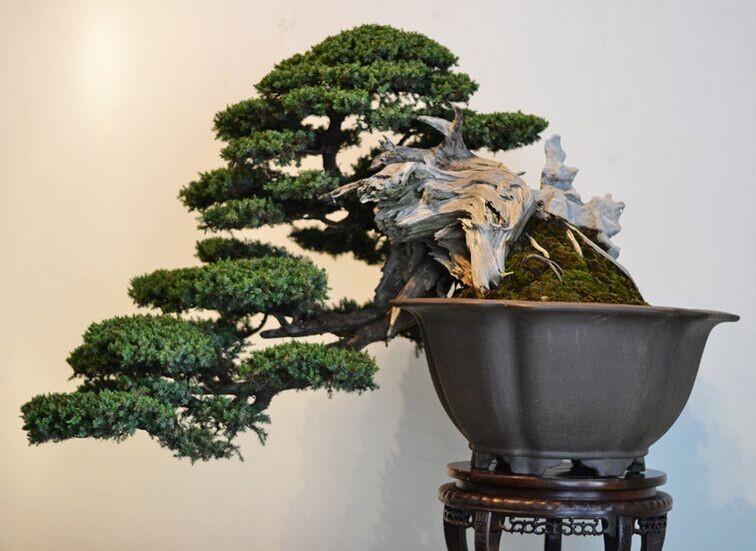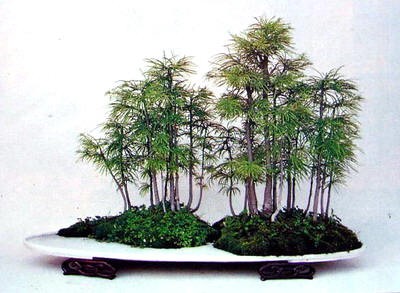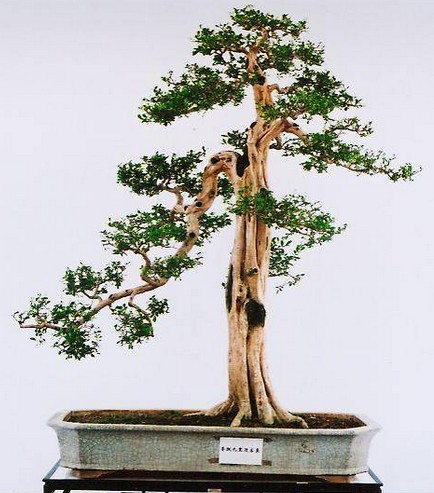The modeling of cliff-style bonsai
Cliff style can be regarded as the most popular bonsai art in the bonsai world, but it is often powerless, and it is difficult to express the unique character of cliff shape in nature. what is the reason? According to my personal exploration for many years, the main reason why ordinary artists rarely get one or two good products is that they rely on digging natural materials. After all, there are few small and medium-sized trees in nature with superior conditions, not to mention cliff-style bonsai with changeable shapes.

However, Azure Dragon bonsai has always been created by small entanglement and modeling, so it is inevitable to get twice the result with half the effort than the general production method, and it is also a handy panacea. Because the cliff tree type is a kind of existing shape in a special environment in nature, it does not affect the orientation of modeling because of the habits of the species, but because of the changing factors of the environment. Therefore, before putting into the creation of cliff-style bonsai, it is necessary to understand the production process of cliff-style modeling.
The formation and occurrence of cliff modeling is closely related to the environment. Generally speaking, cliff modeling trees grow in precipitous and harsh environments such as cliffs, and this kind of terrain is most prone to landslides or slight soil loss over the years. So how can plants growing in this changeable environment not adapt to the trend and grow into a unique form that only such an environment can create? That is the popular cliff shape.
The plant sprouts and has roots, and with the harsh environment of less rain and more wind, little by little it slowly penetrates deeply into the limited soil, after a long-term trend, gradually growing, or a heavy rain, or a gust of wind blowing at night, the plant itself can no longer bear the increased weight and collapse and hang, this protruding variation may cause the branches to break and dry or simply fall to the foot of the mountain, not to mention.
As a result, the plants that still hang on the cliff edge change from strong to weak, and after some struggle, they gradually become a climate, and it is often difficult to survive several times of Phoenix rain, and repeat the same mistake like hanging onions and hanging golden bells. So repeatedly revived to the sun, again and again from strong to weak, repeatedly reborn upside down, broken branches, cracks and tendons, gradually raised a flat and vigorous, creeping forward, like a dragon dancing, elegant, and this is precisely the strength of Azure Dragon bonsai.
Time: 2019-06-13 Click:
- Prev

The modeling of co-planting bonsai
Co-planting is the original appearance of the jungle, which can be pure forest or mixed forest, which is made at will according to everyone's love and choice. the biggest difference between it and the root type is that each tree exists independently.
- Next

Direct dry bonsai modeling
Straight-dry modeling is the most common form in bonsai production, because the vast majority of bonsai materials can be made into direct-dry style, especially digging trees can be found everywhere, but it is not easy to make a good straight-dry bonsai. After all, it is not easy to find superior quality materials for mountain digging.
Related
- Fuxing push coffee new agricultural production and marketing class: lack of small-scale processing plants
- Jujube rice field leisure farm deep ploughing Yilan for five years to create a space for organic food and play
- Nongyu Farm-A trial of organic papaya for brave women with advanced technology
- Four points for attention in the prevention and control of diseases and insect pests of edible fungi
- How to add nutrient solution to Edible Fungi
- Is there any good way to control edible fungus mites?
- Open Inoculation Technology of Edible Fungi
- Is there any clever way to use fertilizer for edible fungus in winter?
- What agents are used to kill the pathogens of edible fungi in the mushroom shed?
- Rapid drying of Edible Fungi

